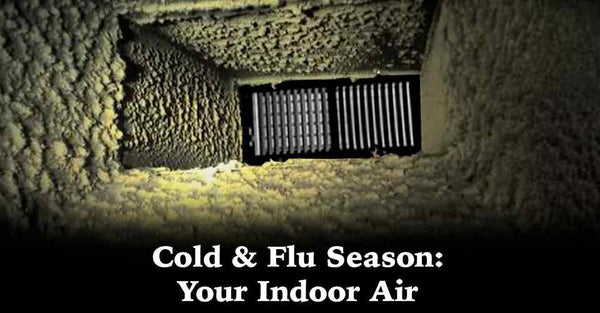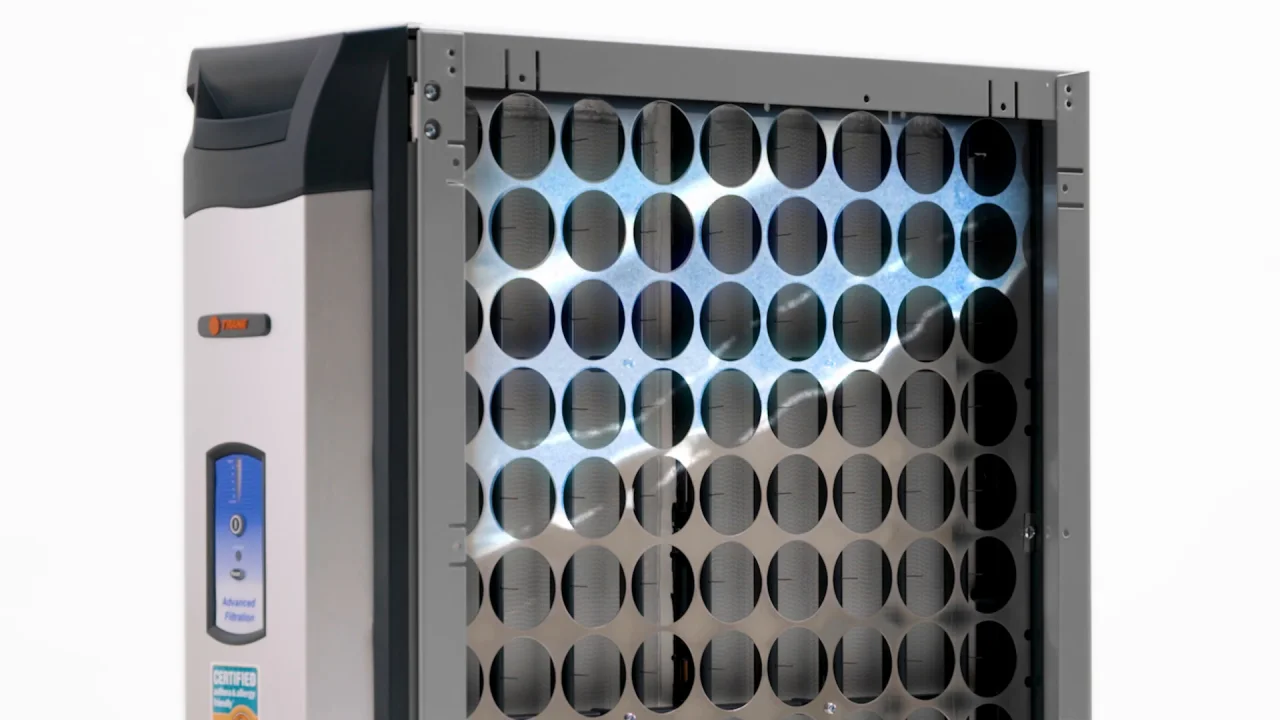Improving air quality in your home during flu season is crucial. Clean air helps reduce illness and promote health.
Flu season often brings more than just sniffles and coughs. Poor indoor air quality can worsen symptoms and spread germs. Families spend more time indoors during cold months, making air quality vital. You can take steps to ensure clean, fresh air in your home.
These steps can help keep your loved ones healthier during flu season. From simple changes to using air purifiers, there are effective ways to improve air quality. By making these changes, you can create a healthier living environment. Let’s explore some practical tips to improve your home’s air quality during flu season.
Importance Of Air Quality
Good air quality in our homes is essential for our health. Clean air can help us breathe easier and stay healthy. During flu season, this becomes even more important. Poor air quality can make flu symptoms worse. It can also spread the flu virus more easily. Let’s explore why air quality is so important during flu season.
Health Benefits
Clean air has many health benefits. It can reduce allergies and asthma symptoms. It helps us sleep better. It can even improve our mood. Here are some key health benefits:
- Reduced Allergies: Clean air means fewer allergens.
- Better Sleep: Breathing clean air helps us sleep soundly.
- Improved Mood: Fresh air can boost our mental health.
Impact On Flu Season
During flu season, air quality is even more crucial. Poor air can spread the flu virus faster. It can also make symptoms worse. Here are some ways air quality impacts flu season:
- Virus Spread: Clean air reduces the spread of the flu virus.
- Symptom Severity: Good air quality can ease flu symptoms.
- Recovery Time: Better air helps us recover quicker from the flu.
Improving air quality in our homes can protect us during flu season. It can keep us and our families healthier and happier.
Identify Pollutants
During flu season, improving air quality at home is essential. One key step is to identify pollutants that can affect your health. Understanding these pollutants helps in taking effective measures to reduce them.
Common Indoor Pollutants
Many pollutants can be found indoors. Dust is a major one. It collects on surfaces and in the air. Pet dander is another common pollutant. Pets shed tiny skin flakes that can cause allergies. Mold spores can also be a problem. They grow in damp areas and can spread through the air. Volatile Organic Compounds (VOCs) are harmful chemicals. They can be found in cleaning products, paints, and furniture. Smoke from tobacco or cooking can also pollute indoor air.
Sources Of Pollution
Identifying sources of pollution can help in controlling them. Dust comes from dirt and fibers in the home. Regular cleaning can reduce its presence. Pet dander comes from animals. Grooming pets often can minimize dander. Mold grows in damp places like bathrooms and basements. Fixing leaks and using dehumidifiers can help. VOCs are released from many household items. Choosing low-VOC products can reduce exposure. Smoke can come from cigarettes and cooking. Avoiding smoking indoors and using exhaust fans can improve air quality.
Ventilation Strategies
During flu season, improving air quality in your home can reduce the spread of germs. Proper ventilation is a crucial strategy. It helps to remove indoor pollutants and bring in fresh air. There are two primary methods to enhance ventilation: natural and mechanical. Both have their unique advantages.
Natural Ventilation
Natural ventilation uses outdoor air to refresh indoor spaces. Open windows and doors to let fresh air circulate. Even a small crack can make a big difference. Use cross-ventilation by opening windows on opposite sides of a room. This creates a flow of air that sweeps away stale air. Keep in mind, outdoor air quality matters. Check it before opening windows, especially during high pollen or pollution days.
Mechanical Ventilation
Mechanical ventilation involves using devices to move air in and out of your home. Exhaust fans in bathrooms and kitchens are common examples. They remove moist and polluted air quickly. Consider using whole-house ventilation systems. These systems ensure a continuous supply of fresh air. They are efficient and work regardless of weather conditions. Air purifiers with HEPA filters also help. They capture viruses and other particles, improving indoor air quality.

Credit: www.sedgwickheating.com
Air Purifiers
During flu season, the air quality inside homes can become compromised. Air purifiers can help maintain cleaner air, reducing the risk of flu virus spread. They work by removing particles, allergens, and contaminants from the air. This makes the indoor environment healthier.
Types Of Air Purifiers
There are several types of air purifiers available, each designed to target different pollutants:
- HEPA Filters: These purifiers trap small particles, including dust, pollen, and some bacteria.
- Activated Carbon Filters: These absorb odors and gases. They are effective against smoke and chemical fumes.
- UV-C Light Purifiers: These use ultraviolet light to kill bacteria and viruses.
- Ionic Purifiers: These release ions that attach to particles, causing them to settle out of the air.
- Ozone Generators: These produce ozone to neutralize pollutants but can be harmful if not used correctly.
Choosing The Right Purifier
Choosing the right air purifier involves considering several factors:
- Room Size: Ensure the purifier is appropriate for the room size. Check the Clean Air Delivery Rate (CADR) to match the room’s square footage.
- Filter Type: Select a purifier based on the specific pollutants you want to remove. For allergens, a HEPA filter is ideal. For odors, an activated carbon filter works best.
- Noise Level: Consider the noise level, especially for bedrooms. Look for purifiers with a quiet operation mode.
- Maintenance: Check how often filters need to be replaced and the cost involved. Some purifiers have washable filters, reducing ongoing costs.
- Additional Features: Features like air quality sensors, automatic mode, and remote control can add convenience.
Use this table to compare different air purifiers:
| Purifier Type | Best For | Considerations |
|---|---|---|
| HEPA Filters | Allergens, Dust | Regular filter replacement |
| Activated Carbon Filters | Odors, Smoke | May not capture small particles |
| UV-C Light Purifiers | Bacteria, Viruses | Possible ozone production |
| Ionic Purifiers | Small particles | Can produce ozone |
| Ozone Generators | Neutralizing pollutants | Health risks if misused |
Air purifiers can significantly improve air quality during flu season. Choose one that meets your needs to ensure a healthier home environment.
Humidity Control
Maintaining proper humidity levels is crucial for improving air quality during flu season. High or low humidity can affect health and comfort. Proper control can reduce flu virus survival and alleviate respiratory issues.
Ideal Humidity Levels
Maintaining the right humidity levels can make a big difference. Ideal indoor humidity levels range from 30% to 50%. Too high or too low can cause problems. High humidity promotes mold growth. Low humidity dries out the skin and nasal passages.
Using Humidifiers And Dehumidifiers
Using humidifiers and dehumidifiers can help maintain ideal humidity levels. A humidifier adds moisture to the air. This is useful in winter when air is dry. A dehumidifier removes excess moisture. This is useful in summer when air is humid. Both devices help keep air quality optimal.

Credit: www.airfiltersdelivered.com
Regular Cleaning
Flu season brings challenges. One essential step is maintaining a clean home. Regular cleaning helps reduce viruses and bacteria. It also improves air quality. Let’s explore how to clean effectively.
Dust And Allergen Removal
Dust and allergens accumulate quickly. Use a damp cloth to wipe surfaces. Vacuum carpets and rugs frequently. Choose a vacuum with a HEPA filter. This traps small particles. Don’t forget to clean curtains and blinds. Wash bedding in hot water weekly.
Safe Cleaning Products
Many cleaning products contain harsh chemicals. These can irritate your lungs. Opt for natural cleaners. Vinegar and baking soda work well. Essential oils add a pleasant scent. Always read labels. Ensure the product is safe for your family. Avoid aerosols. They can worsen air quality.
Houseplants For Air Quality
During flu season, indoor air quality becomes crucial. Houseplants can help improve air quality in homes. They not only beautify your space but also act as natural air purifiers. Here’s how you can use houseplants to keep your home’s air clean and fresh.
Best Plants For Air Purification
Spider plants are excellent for purifying air. They remove toxins like formaldehyde and xylene. Snake plants are another great option. They convert carbon dioxide into oxygen during the night. Peace lilies can also help. They filter out ammonia, benzene, and other harmful pollutants.
Bamboo palms are effective too. They remove benzene and trichloroethylene from the air. English ivy is ideal for reducing airborne mold. Keep a few of these plants in your home to maintain better air quality.
Care Tips For Houseplants
Proper care is essential for houseplants to thrive. Place them in a location with indirect sunlight. Water them regularly but avoid overwatering. Check the soil moisture before watering. Use a well-draining pot to prevent root rot.
Dust the leaves occasionally. This helps the plants breathe and function better. Prune dead or yellowing leaves to encourage new growth. Feed your plants with a balanced fertilizer every month. This keeps them healthy and strong.
With these simple tips, your houseplants will flourish. They will continue to purify the air in your home during flu season.

Credit: www.trane.com
Professional Help
During flu season, maintaining good air quality at home becomes crucial. While there are many DIY steps to enhance air quality, sometimes seeking professional help is essential. Experts can provide comprehensive solutions tailored to your specific needs.
When To Consult Experts
Consult experts if you notice persistent allergy symptoms or frequent respiratory issues. Professionals should also be called if you have poor ventilation or suspect mold growth. Homes with high humidity levels or recent construction may also benefit from expert services.
Services Offered By Professionals
Professionals provide a variety of services to improve air quality. These include:
- Air Duct Cleaning: This removes dust, mold, and allergens from your air ducts.
- HVAC Maintenance: Regular maintenance ensures your heating and cooling systems are functioning efficiently.
- Air Purification Systems: Installation of advanced air purifiers can significantly reduce indoor pollutants.
- Humidity Control: Experts can install dehumidifiers or humidifiers as needed to maintain optimal humidity levels.
- Mold Remediation: This service removes mold and prevents future growth, ensuring a healthy living environment.
These services help in maintaining a clean and healthy home environment, especially during flu season.
Frequently Asked Questions
How Can I Improve Indoor Air Quality?
Improving indoor air quality involves proper ventilation, using air purifiers, and maintaining cleanliness. Regularly changing air filters and keeping humidity levels in check can also help.
What Are The Best Air Purifiers For Flu Season?
HEPA air purifiers are the best for flu season. They effectively capture airborne viruses, bacteria, and allergens, improving indoor air quality.
How Does Humidity Affect Air Quality?
Humidity levels impact air quality by influencing mold growth and dust mite populations. Maintaining 30-50% humidity helps reduce these issues and improves air quality.
Why Is Ventilation Important For Air Quality?
Proper ventilation helps remove indoor pollutants and brings in fresh outdoor air. This is crucial for maintaining good air quality, especially during flu season.
Conclusion
Improving air quality during flu season is crucial for health. Simple changes help. Clean regularly. Use air purifiers. Keep windows open when possible. Avoid indoor smoking. Add houseplants. These steps reduce flu risks. Keep your home fresh and safe. Breathe easier.
Stay healthier. Prioritize your well-being.
Rakib Sarwar is a Registered Pharmacist and a reputed health and wellness blogger. He has a great interest in Air purifiers.
